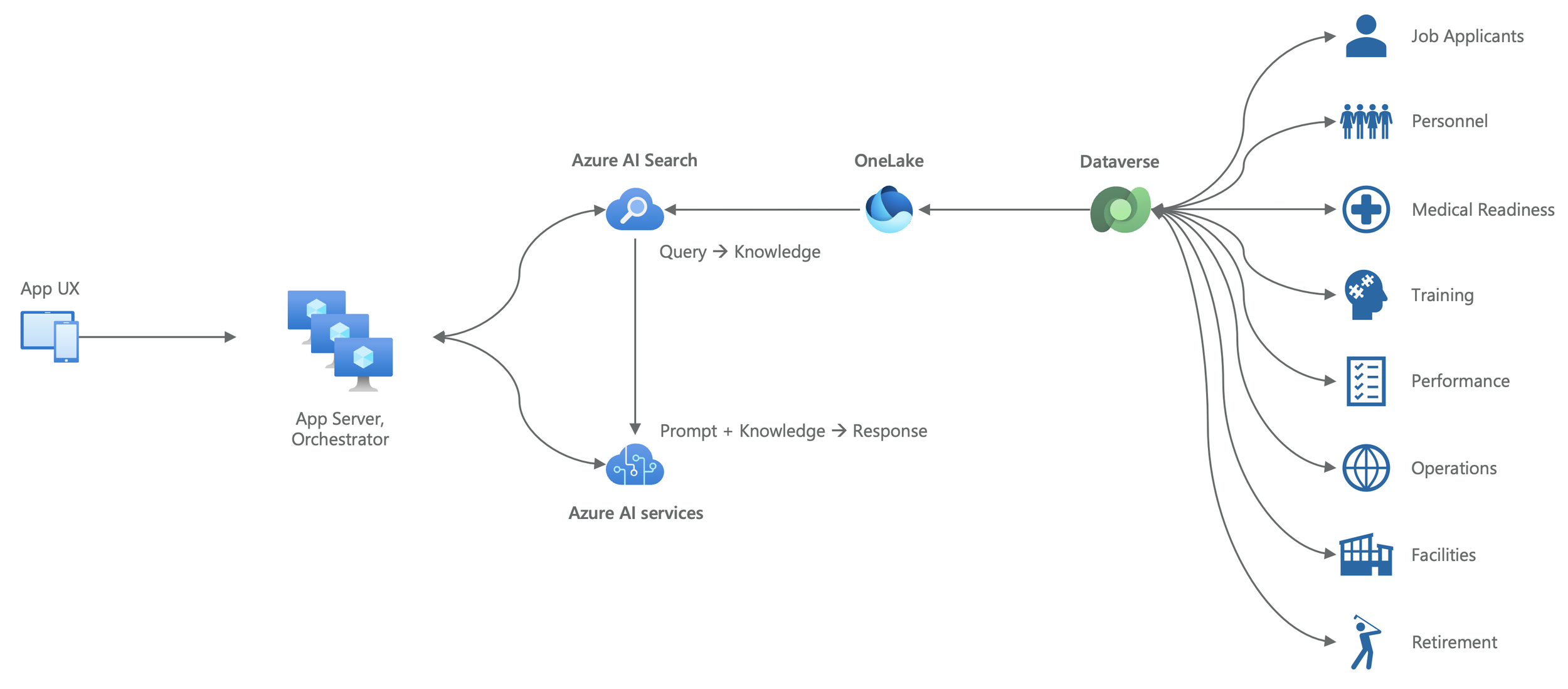v. A Future-Ready Public Sector
A Future-Ready Public Sector
We’ll conclude by exploring how EOA equips organizations to leverage artificial intelligence, in particular, AI acting on an agency’s own data.
The diagram below reshuffles the various workloads from our earlier example. On the right we have the collection of Tier 1 “core business systems” discussed at length above, all atop Dataverse as their application data service.
Dataverse then shortcuts that data into OneLake.
Meanwhile, on the far left we see an application user experience (UX)—e.g., a mobile, tablet, or web app, built with Power Apps, in this case—that provides an end user the ability to interact with our AI workload.
The application sitting beneath the UX queries the knowledge contained in Azure AI Search’s index (as derived from the data sources on the right). It then passes that prompt and knowledge to Azure AI services to generate an appropriate response to be fed back to the user.
This is what is called a RAG pattern, which stands for “retrieval augmented generation”. The precise methods of causing AI to act upon an organization’s data are both varied and constantly evolving, but whether RAG or some other technique, similar principles apply: Consolidate the organization’s data into storage technologies that are accessible to AI, index that data, and pass that data to AI services that are able to reason over that data and generate a response.
If you’re interested in further exploring the topic of organizational maturity for artificial intelligence, I encourage you to read my September 2024 white paper, Crafting your Future-Ready Enterprise AI Strategy, Second Edition.
The key is that ecosystem-oriented architecture creates the conditions for these types of patterns to succeed, and has made the agency future-ready in its flexibility.
Organizations across the economy and around the world have spent decades kicking the proverbial data can down the road, opportunistically storing data in whichever service was cheapest—or simply present—implementing workloads that are disconnected or integrated as point-to-point rather than via platform-level integration services, and paying little to no mind of data governance.
This white paper could have easily been four times longer, the basis for a semester long class, at minimum. So, I’ll leave you with this.
The transition to EOA feels difficult at first, particularly in public sector organizations with lengthy budget planning cycles that lack a tradition of viewing technology leaders as strategic leaders. But as wave periods between major innovation become shorter, so too does the need for IT leaders across government to become strategic leaders of their organizations. After all…
Wave periods between major innovation in the cloud are growing shorter. We no longer have the luxury of waiting it out, of adopting later. Cloud ecosystems built on strategic foundations create the conditions to absorb successive waves of change.
Re-read a previous chapter…

